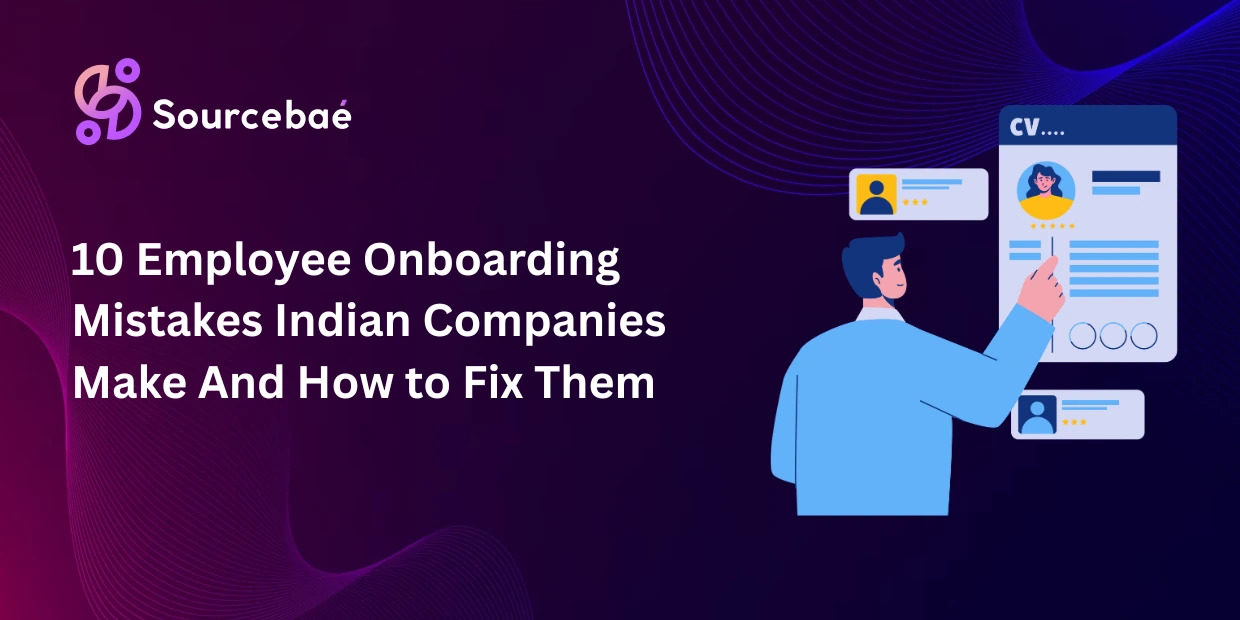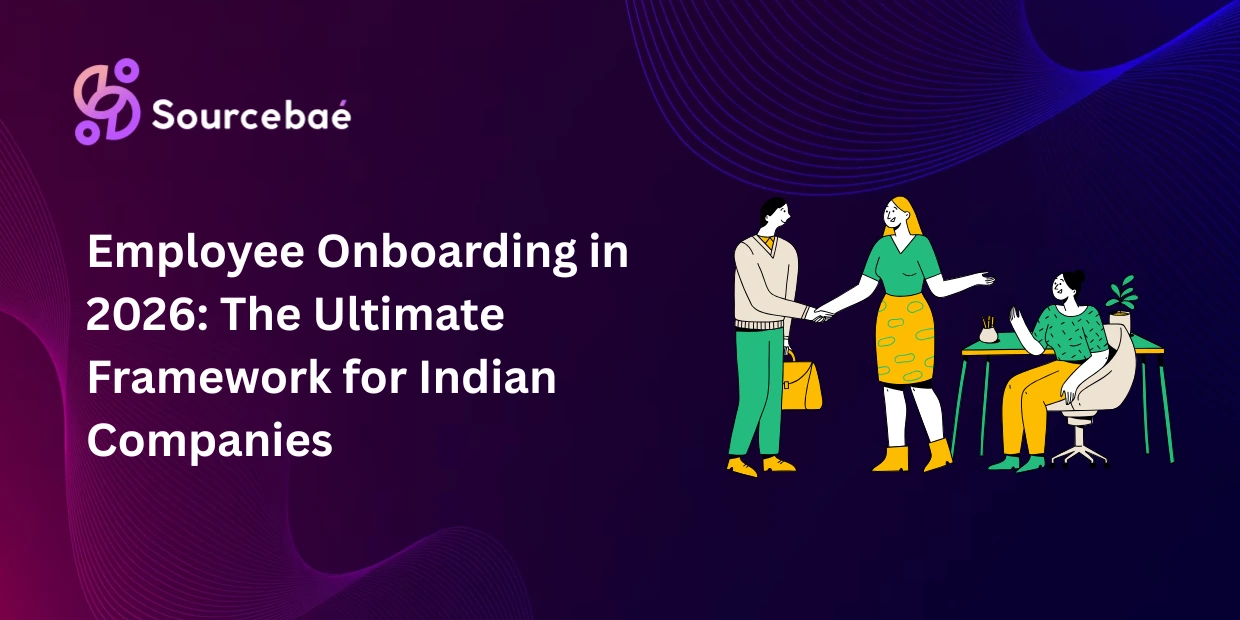Recruitment Process Outsourcing(RPO) offers a strategic solution for companies seeking to scale hiring without overburdening their internal teams. However, on the other hand, an RPO partnership is as strong as the contract behind it. A well-structured RPO contract productively ensures you get optimal results, clear outcomes, and scalability based on evolving recruitment demands.
RPO is expanding rapidly, driven by the global RPO market expected to reach $15 billion by 2027, but it only happens when the contracts are structured properly. A single contractual error can turn an apparently efficient hiring process into a costly impediment.
That is where this guide comes in. We’ll lead you through 6 tried and true tips for negotiating an RPO contract with confidence, backed by the real-world observations and best practices from top performers.
Analysing Recruitment Needs
Before negotiating, a company should conduct a personal hiring forecast to determine its market value and leverage. Your projections should incorporate periodic shifts, projected growth, projected staffing changes and anticipated market shifts.
Define exactly which part of recruitment you plan to outsource. Does it include the entire hiring process, only sourcing and screening or just high-volume roles? It’s better to be more specific. Consider whether an RPO provider can handle global roles or serve only certain business units, as well as the difficulty of roles and their impact on other business departments. Since hiring needs change, it’s important to make your plan flexible.
Establishing goals and key performance indicators before negotiations begin. Market analysis indicates that 40% of firms assess recruitment effectiveness by leveraging new hire performance evaluations. This serves as a key indicator for evaluating the Recruitment Process Outsourcing(RPO).performance.
Arranging Service Level Agreements and Performance Metrics
Service Level Agreements are the foundation of hiring partnerships, defining expectations for performance and response. Agreements serve as the contractual foundation of hiring partnerships, establishing expectations for performance and response. These time-bound KPIs often include the number of days required to deliver a qualified shortlist or the percentage of roles filled within a specified deadline.
Evaluative SLA metrics to negotiate include:
Time to fill targets:
The Society for Human Resource Management estimates an average time-to-fill of 42 days across industries, which might serve as a baseline for your talks. However, these targets should be adjusted to reflect position complexity, market competitiveness, and seniority levels.
Metrics for successful hiring:
Keep an eye on the success and retention rates of new hires. A common service level goal is to have 90% of new hires still working for the company at the end of the first year. Make sure that your contract spells out how to measure quality and what will happen if the standards aren’t met.SLA
Candidate Metrics:
72% of candidates who have a bad experience are likely to talk about it online or with other people, according to research. To protect your job brand, make sure your SLAs include candidate satisfaction scores and ways for candidates to give you feedback.
Navigating Pricing Models and Cost Structures
The three main pricing models are as follows:
Management Fee:
The RPO provider charges a management fee every month that covers services, infrastructure, and knowledge. This plan has steady costs and ongoing support, which makes it perfect for businesses that need to hire people on a regular basis. But it might not be worth the money when the number of job openings changes a lot. models
Cost Per Hire:
The clients pay a set fee every time the RPO provider makes a good hire. The fee changes based on the type of job, the industry, and the number of hires. Because you only pay for results, this approach makes people accountable based on performance and lowers risk. For single candidates, though, per-hire costs may be higher than other pricing plans.
Hybrid Models:
The best approach combines a reduced monthly management fee plus pay-for-performance fees. This model takes the best parts of both: the monthly fee keeps the provider’s core recruitment team on board during slow times, and performance fees cover the costs of growing during times of high hire demand.
Negotiate Transparent Pricing Models
The hardest part of any RPO deal can be setting the price. Costs can go up quickly if the terms aren’t clear, especially if the number of people you hire changes. The important thing is to know how different price models work and pick one that fits with your plan for growth.
Price structures for most RPO providers are the same: per-hire, monthly retainer, or project-based price. Each has good and bad points. If you know exactly how many people you need to hire, a per-hire strategy works well.
For steady-state hiring, retainers work well, while project-based pricing works better for businesses that hire a lot of people at once or during certain times of the year. No matter what plan you choose, you should push for full cost transparency. This includes tech stacks, sourcing tools, employer branding costs, and account management fees.
Talk about scalability and freedom as well. Can you change the prices if 30% fewer people hire you? Can I go over my charges? Make sure that the prices take into account the ups and downs of your business without making every change a new deal. And most importantly, get a written breakdown with no vague “to be determined” line items.
Incorporate Performance and Accountability Clauses
It’s one thing to set standards; it’s another thing to follow through on them. Performance and accountability measures come in handy in this case. These aren’t just legal protections; they’re also smart ways to make sure that your RPO partner always gives you value.
First, establish Service Level Agreements that define specific goals like time to hire, candidate quality, diversity benchmarks, and hiring manager satisfaction. Clearly outline what success looks like and include provisions for what happens if targets aren’t met, whether that means refunds, discounts, or an agreed-upon improvement plan.
Next, set up regular performance reviews and check-ins every month or three months to go over KPIs, celebrate wins, and fill in any holes. You’ll also need phrases for fixing problems. For example, what happens if results keep going down? A structured escalation path keeps everyone on both sides from having to respond.
Address Compliance and Confidentiality
When you hand over your hiring process, you are not just outsourcing jobs; you are also giving them sensitive information. For this reason, the central focus of every RPO contract should be data security and compliance.
Ensure that your RPO provider complies with essential regulations like GDPR, EEOC, and applicable local labour laws that oversee your candidate information. Request their security certifications (such as ISO 27001) and obtain documentation regarding the storage, access, and eventual deletion of candidate data.
Strong confidentiality clauses are equally critical. They protect your proprietary hiring methods, compensation models, and internal organizational charts. And don’t overlook audit rights and the ability to review the provider’s processes periodically. This transparency encourages long-term trust and ensures ongoing compliance throughout the partnership.
Structuring Termination and Exit Strategies
Every RPO agreement has an expiration date. Are you prepared for what follows? Poorly managed exits can result in missed deadlines, data loss, and operational disorder for your business. Termination language must be explicit to minimize issues when the provider or contract undergoes alterations.
Termination Procedures and Notice:
The amount of notice required to terminate the agreement, such as 30 to 90 days, must be made clear in the clause. The distinction between ending a contract for cause (due to a breach) and other reasons should be stated. Putting an end to it for convenience (without reason). Additionally, the plan must specify how open positions will be managed during the transition, what documentation is required to formally terminate an employee and how the official termination date is determined.
Data Handover and System Access Control:
A clear deadline, such as 30 days following the completion of the job, must be set for the RPO provider to return all candidate data or securely remove it. It’s crucial that the process of removing someone from your applicant tracking system (ATS) or candidate lists is secure and simple to comprehend. You should also discuss technical details in this section, such as the models and file types that can be used to export data, as well as any costs associated with viewing or extracting data during the exit process.
Knowledge Transfer and Transition Support:
Firm dates for knowledge sharing and details on how to persuade the provider’s recruiters to leave should be included in the exit plan. This entails providing all required transition documents to the new team or an internal replacement. To ensure that the transition is seamless and your recruitment efforts continue on course, think about including a provision for assistance after the employee has been fired.
- Terms of the financial settlement: Talk about how to pay for work that hasn’t been done yet, when to send bills, and any fines or refunds that may be due for work that hasn’t been done. In some contracts, the fee to get out of the deal goes down as time goes on.
- Planning for what to do in case of an open position: Plan for how you will handle open jobs, candidate pools, and scheduled interviews while you are making the change. Ask the person who is leaving if they will finish up any unfinished business or if they will hand it off right away.
Early input from legal and procurement is key
All too frequently, HR teams get caught up in RPO discussions before bringing up procurement or law, which is when issues begin to surface. Bring these individuals in early to prevent missing warning signs and late contract approvals.
Discuss and work out employment regulations and matters with your legal team. This will ensure compliance with laws, protect the business from litigation and identify risky terms like those that provide excessive protections or raise questions about intellectual property ownership.
The purchasing team also ensures that all vendors adhere to the company’s spending tracking and budgeting guidelines. Bring them in not only for the final review but also for the RFP evaluation or shortlisting process. Their early involvement not only expedites approvals but also has the potential to improve risk and price protection.
Leveraging Multiple Vendors for Negotiation Power
Avoid entering into discussions with a single option in mind. It is advisable to examine multiple RPO providers in order to compare terms, prices and offerings. You have more negotiating leverage and can steer clear of a bad deal when there are rivals involved.
They are aware that there will be other offers, and when they are aware that there are other options, they are considerably more inclined to make their best offer. Negotiate by using the disparate prices.
Discuss them when discussing costs, service quality, or flexibility to obtain better terms and additional benefits that you wouldn’t be able to get from a single supplier. A comparison with the market is also beneficial.
Determine the average RPO rate in your industry and company to ensure the suggested expenses are correct. In addition to strengthening your negotiating position, this knowledge enables you to haggle and identify excessive prices confidently.
Conclusion
There is more to securing an RPO deal than merely obtaining the best price. It’s about creating a solid, adaptable alliance that advances your long-term objectives for hiring talent. A solid foundation is the foundation of a strong base.
Determine how many employees you will need to specify your objectives in your SLAs and include favourable conditions for data security results and termination. The most effective RPO agreements balance risk management, incentive programs, and business expansion.
Making your scope clear, adding quantifiable performance metrics, and carefully comparing vendors will give your RPO contract a true competitive edge.
If you collaborate with your RPO partner properly, they will assist you in hiring more strategically, intelligentl,y and better. They won’t only help you get jobs more quickly.





